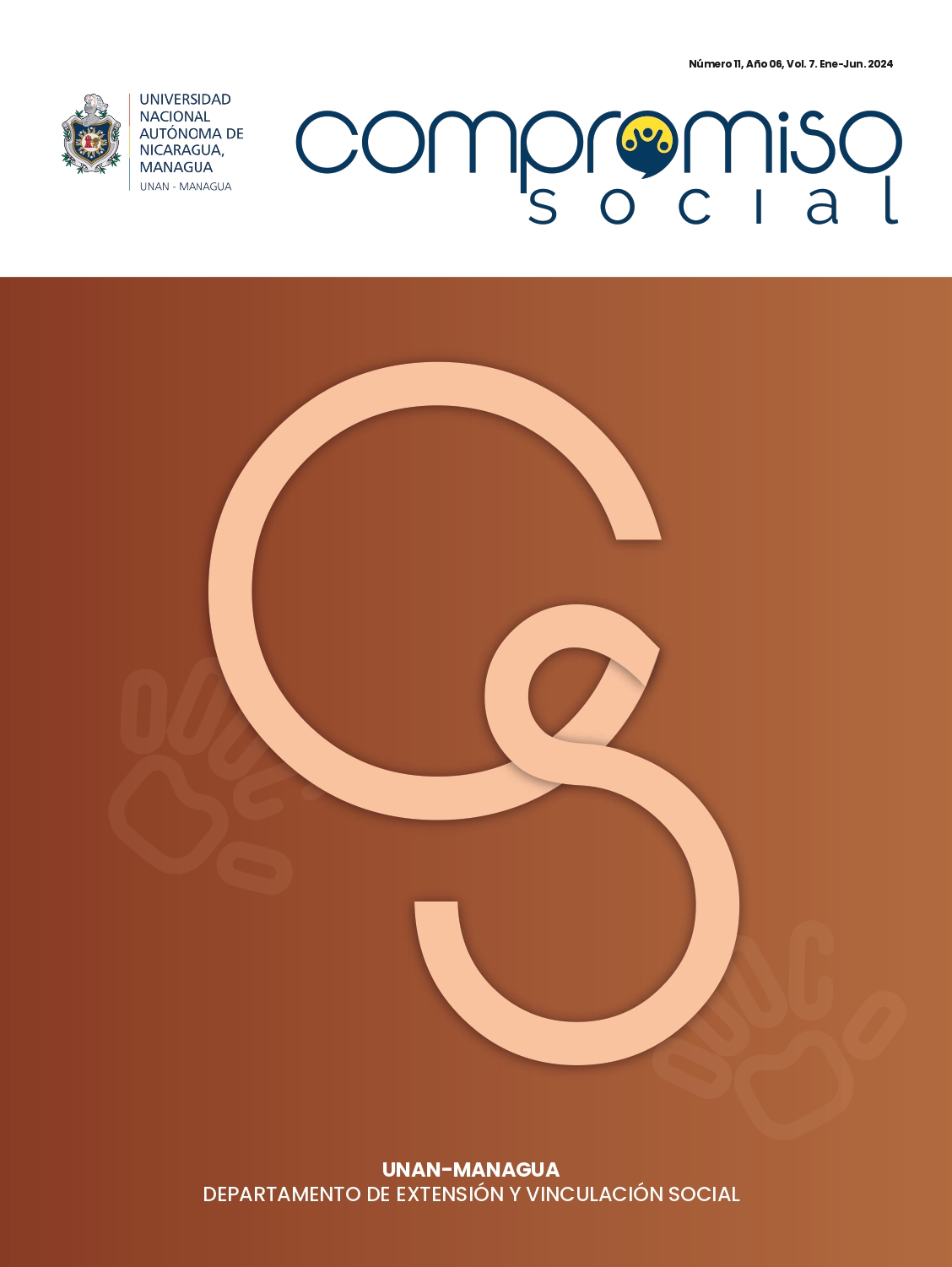Línea base para el estudio de la densidad poblacional de Quiscalus nicaragüensis Salvin y Godman 1891 en Nicaragua
DOI:
https://doi.org/10.5377/recoso.v7i11.18404Palabras clave:
Zanatillo nicaragüense, quiscalus nicaragüensis, línea base, densidad poblacional, endémicoResumen
Esta investigación tiene como objetivo establecer la línea base para el estudio de la densidad poblacional del Zanatillo Nicaragüense (Quiscalus nicaragüensis) en Nicaragua. Se llevó a cabo entre marzo y julio de 2020 utilizando el método de transectos en faja en los municipios de Mateare, Tipitapa, Tisma y Rivas, dentro de su área de distribución. El método de transectos es una técnica de muestreo que proporciona información precisa sobre la vegetación de una zona sin necesidad de un análisis exhaustivo, mediante la medición de parámetros en un rectángulo del área de estudio. El Zanatillo nicaragüense es una ave endémica en peligro crítico de extinción, por lo que este estudio es crucial para la valoración y manejo de la especie. Los resultados preliminares indican una densidad poblacional aproximada de 8 individuos por hectárea, siendo Tisma el sitio con mayor densidad (12 individuos/ha). La distribución del ave abarca 144,618 ha, principalmente en las orillas de los grandes lagos de Nicaragua, con preferencia por los humedales marginales lacustres (11 individuos/ha), que ofrecen hábitats heterogéneos.
Este estudio sienta las bases para futuras investigaciones poblacionales y planes de manejo del Zanatillo nicaragüense. Se recomienda un muestreo aleatorio simple con 201 transectos de 1,295 m cada uno, distribuidos nacionalmente, debido a la homogeneidad en la densidad poblacional entre grupos. Este diseño asegura un muestreo significativo con un nivel de significancia del 95%.
570
Citas
Burnham, K.P., D.R. Anderson y J.L. laake. (1980). Estimation of density from line transect sampling of biological populations. Wildlife Monographs 72: 1-202.
Chavarría, L y Torres, M. (2014). Zanatillo. La prensa. Nicaragua.
Fleishman, E. J.R. Thomson, R. Nally, D.D. Murphy y Fay, J.P. (2004). Using indicator species to predict species richness of múltiple taxonomic groups, sf.Lista Roja 2da. Edición (2018). Especies Vertebradas en Riesgo de Extinción de Nicaragua. ISBN: 978-99964-872-1-7
Mandujano, S. (1994). Conceptos generales del método de conteo de animales en transectos. Ciencia 45. 203-211.
Martínez Sánchez, J. C., Maes, J. M. Berghe, E. Morales, S. y Castañeda, E. A. (2001). Biodiversidad Zoológica de Nicaragua, Managua.Morales, S y Torres, M. (13 de mayo 2019). El zanatillo: emblemática ave nica podría desaparecer. El nuevo diario p. 12
Morales, S. Zolotoff, J. M. Gutiérrez, M. y Torrez, M. (2009) Nicaragua. Pp. 281 – 288 en C. Devenish, D. F. Díaz Fernández, R. P. Clay, I. Davidson & I. Yépez Zabala Eds. Important Bird Areas Américas - Priority sites for biodiversity conservation. Quito, Ecuador: BirdLife International (BirdLife Conservation Series No. 16).
Ralph, C. J. Geupel, G.R. Pyle, P. M. Thomas E. DeSante, D. F. Milá, B. (1996). Manual de métodos de campo para el monitoreo de aves terrestres. Gen. Tech. Rep. PSW-GTR159. Albany, CA: Pacific Southwest Research Station, Forest Service, U.S. Department of Agriculture, 46 p.
Schulze, C, et al. (2004). Biodiversity indicator groups of tropical land use systems comparing plants, birds, and insects.
UICN (2006). Los humedales transfronterizos de Nicaragua y Costa Rica: documento informativo / Ed. y comp. por Julio Montes de Oca Lugo y Jackeline Siles Calvo. -- 1a. ed. – San José, Costa Rica: UICN. Oficina Regional para Mesoamérica.
Vílchez, S., Harvey, C., Sánchez, D., Medina, A y Hernández, B. Diversidad de aves en un paisaje fragmentado de un bosque seco en Rivas, Nicaragua. S.f. Revista El Encuentro (68). Managua, Nicaragua.
Wunderle, J. M. (1994): Método para contar aves terrestres del Caribe. Gen. Tech. Rep. SO-100, LA: U.S. Department of agriculture. Forest Service.
Zolotoff, J. Cisneros, C. Medina, A. y Mendieta, R. 2012. Diagnóstico del estado de composición de las poblaciones de aves (residentes y migratorias) y murciélagos en el complejo eólico de Eolo de Nicaragua, al sur de la ciudad de Rivas, Nicaragua. Fundación Cocibolca. Managua, Nicaragua




